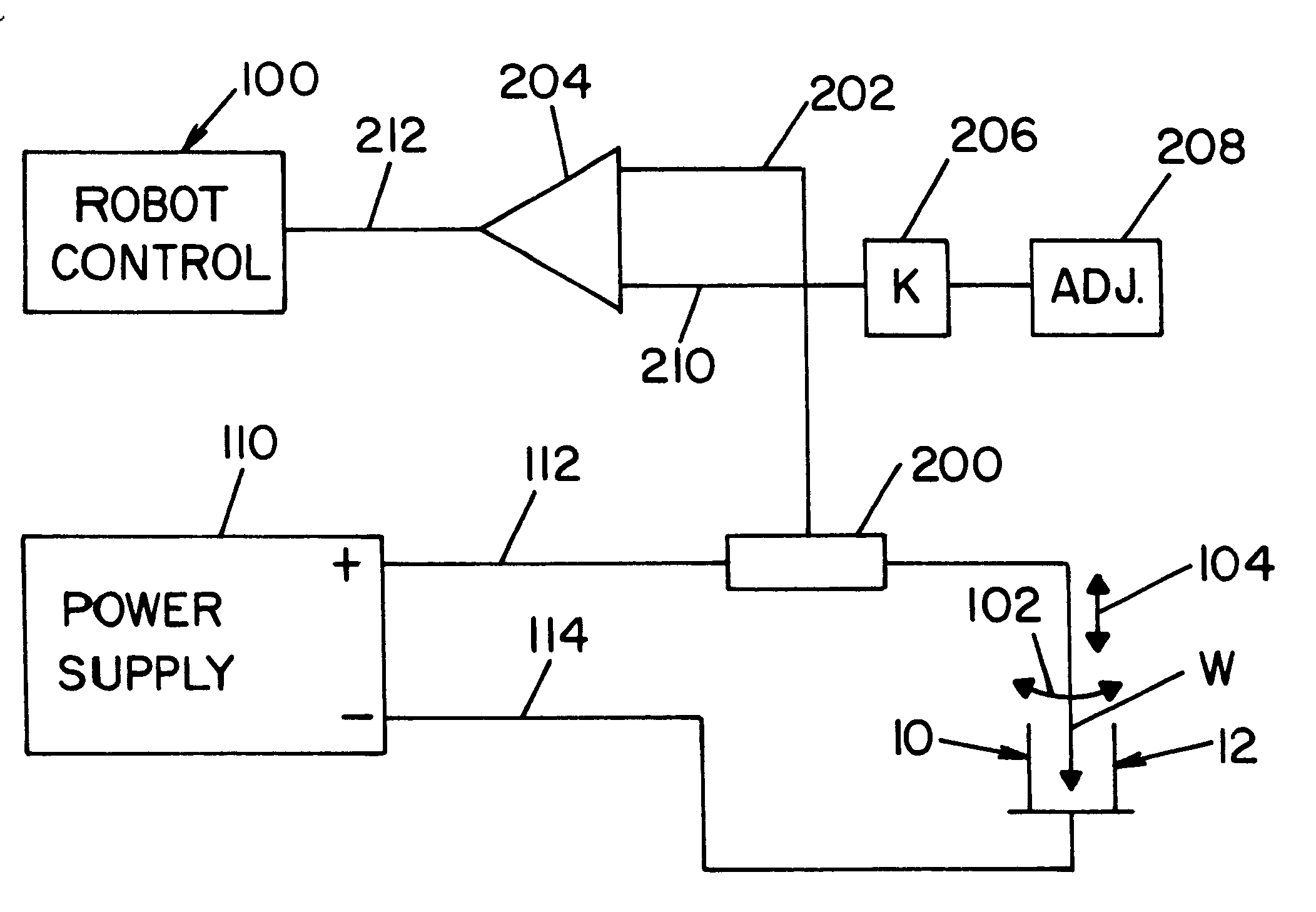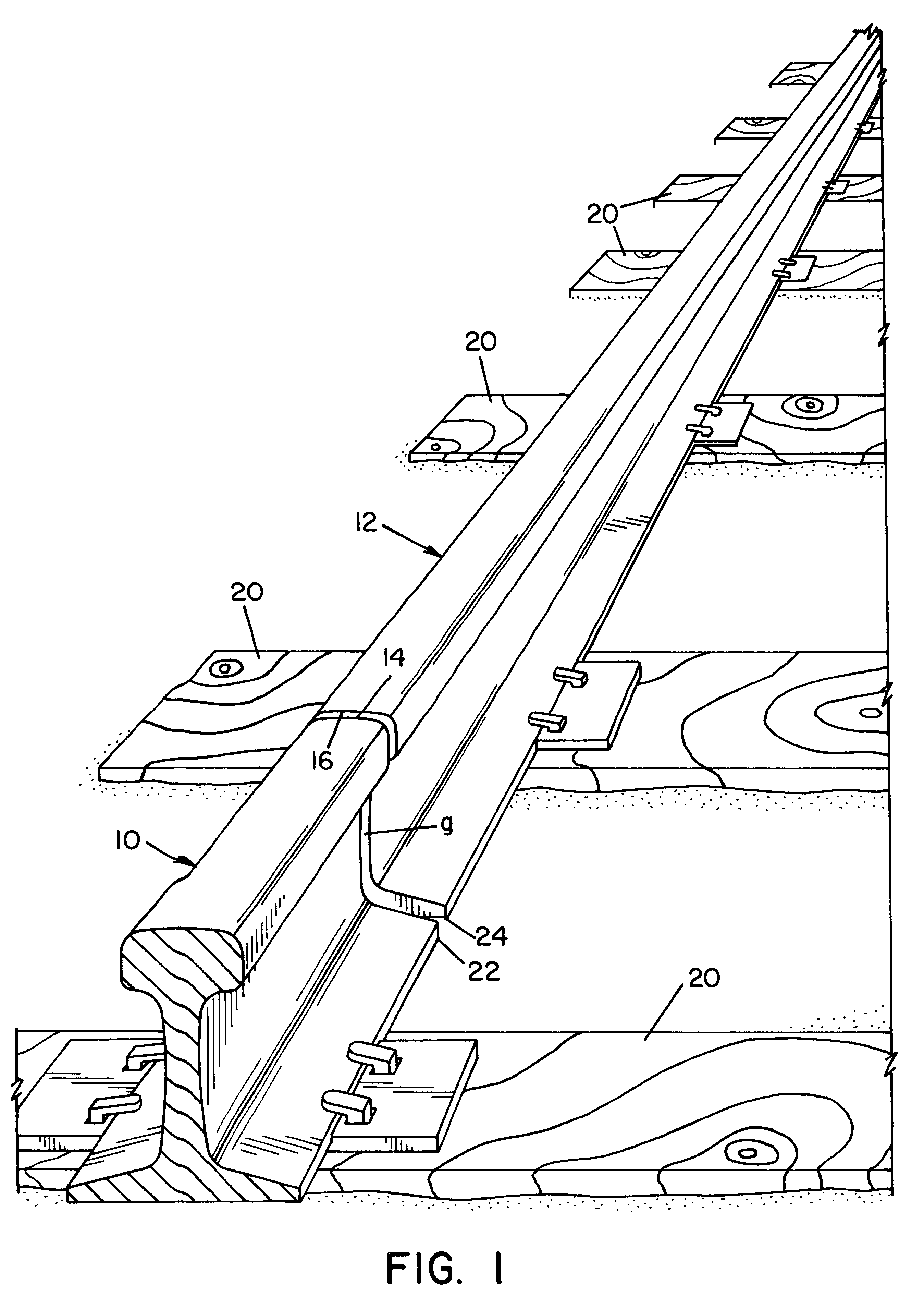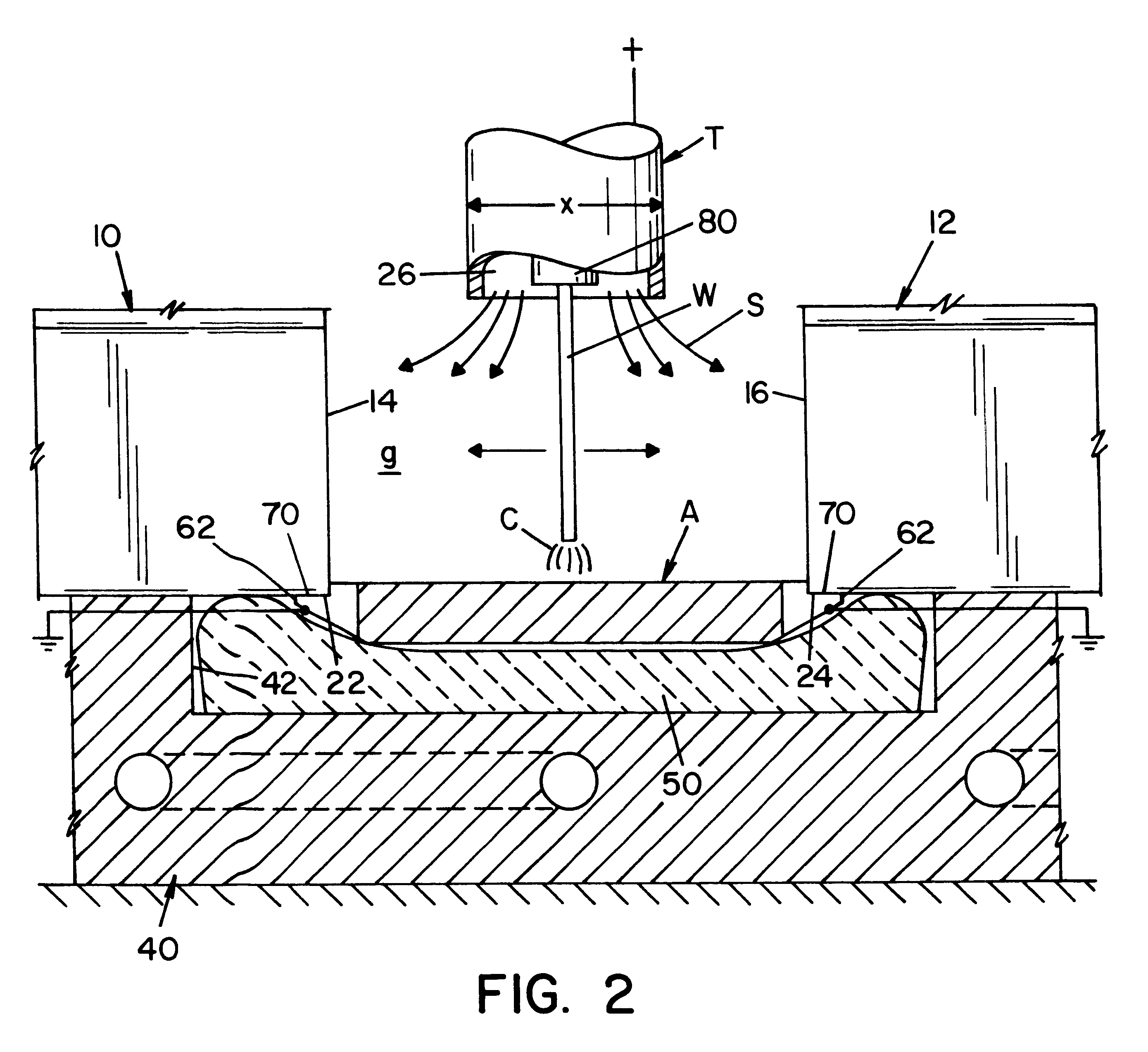Method and system for welding railroad rails
a technology for railroad rails and rails, applied in auxiliary welding devices, soldering devices, ways, etc., can solve the problems of arc blowing through, arc blowing through or blowing through holes that are not desirable, and tend to create cutting actions, etc., to achieve the effect of convenient implementation
- Summary
- Abstract
- Description
- Claims
- Application Information
AI Technical Summary
Benefits of technology
Problems solved by technology
Method used
Image
Examples
Embodiment Construction
Referring to the drawings wherein the showings are for the purpose of illustrating a preferred embodiment of the invention only, and not for the purpose of limiting same, FIG. 1 shows two spaced railroad rails 10, 12 mounted on railroad ties 20 and provided with a gap g between oppositely facing surfaces 14, 16, respectively. The gap g is provided between the rails for the purposes of joining the rails in the field by using a robotic control mechanism to perform a welding operation as illustrated in Morlock U.S. Pat. No. 5,773,779 and Morlock U.S. Pat. No. 5,877,468. Gap g is above flat base portions 22, 24, which portions are used to support a lower backing plate A, positioned below flat bases 22, 24 to define the root pass area. A root pass is the first layer of molten metal to be deposited by the electric arc welding process in gap g. As shown in FIGS. 2-4, backing plate A is supported in the longitudinally extending recess 42 in copper shoe 40 so that recess extends between rail...
PUM
| Property | Measurement | Unit |
|---|---|---|
| Length | aaaaa | aaaaa |
| Current | aaaaa | aaaaa |
| Electric potential / voltage | aaaaa | aaaaa |
Abstract
Description
Claims
Application Information
 Login to View More
Login to View More - R&D
- Intellectual Property
- Life Sciences
- Materials
- Tech Scout
- Unparalleled Data Quality
- Higher Quality Content
- 60% Fewer Hallucinations
Browse by: Latest US Patents, China's latest patents, Technical Efficacy Thesaurus, Application Domain, Technology Topic, Popular Technical Reports.
© 2025 PatSnap. All rights reserved.Legal|Privacy policy|Modern Slavery Act Transparency Statement|Sitemap|About US| Contact US: help@patsnap.com



